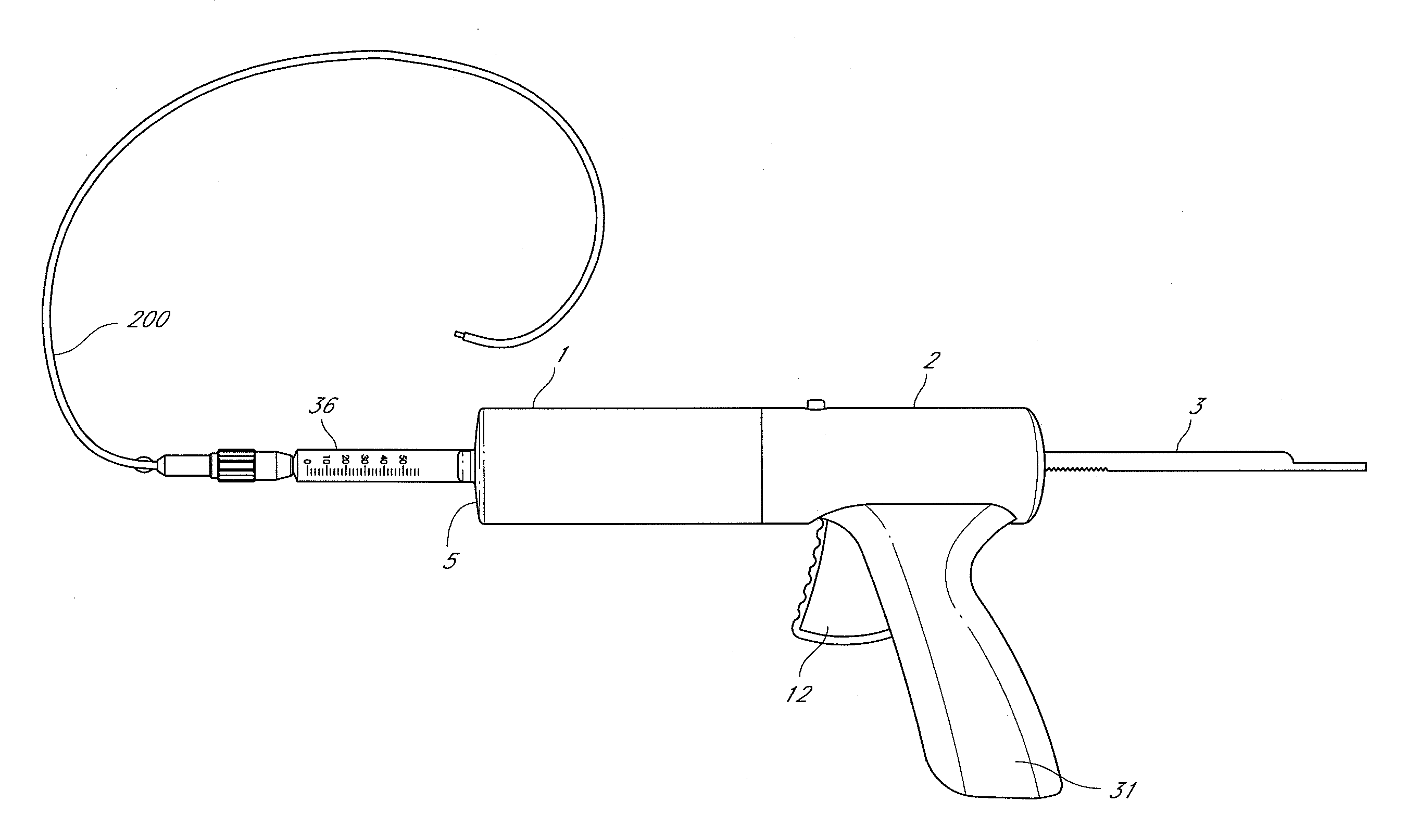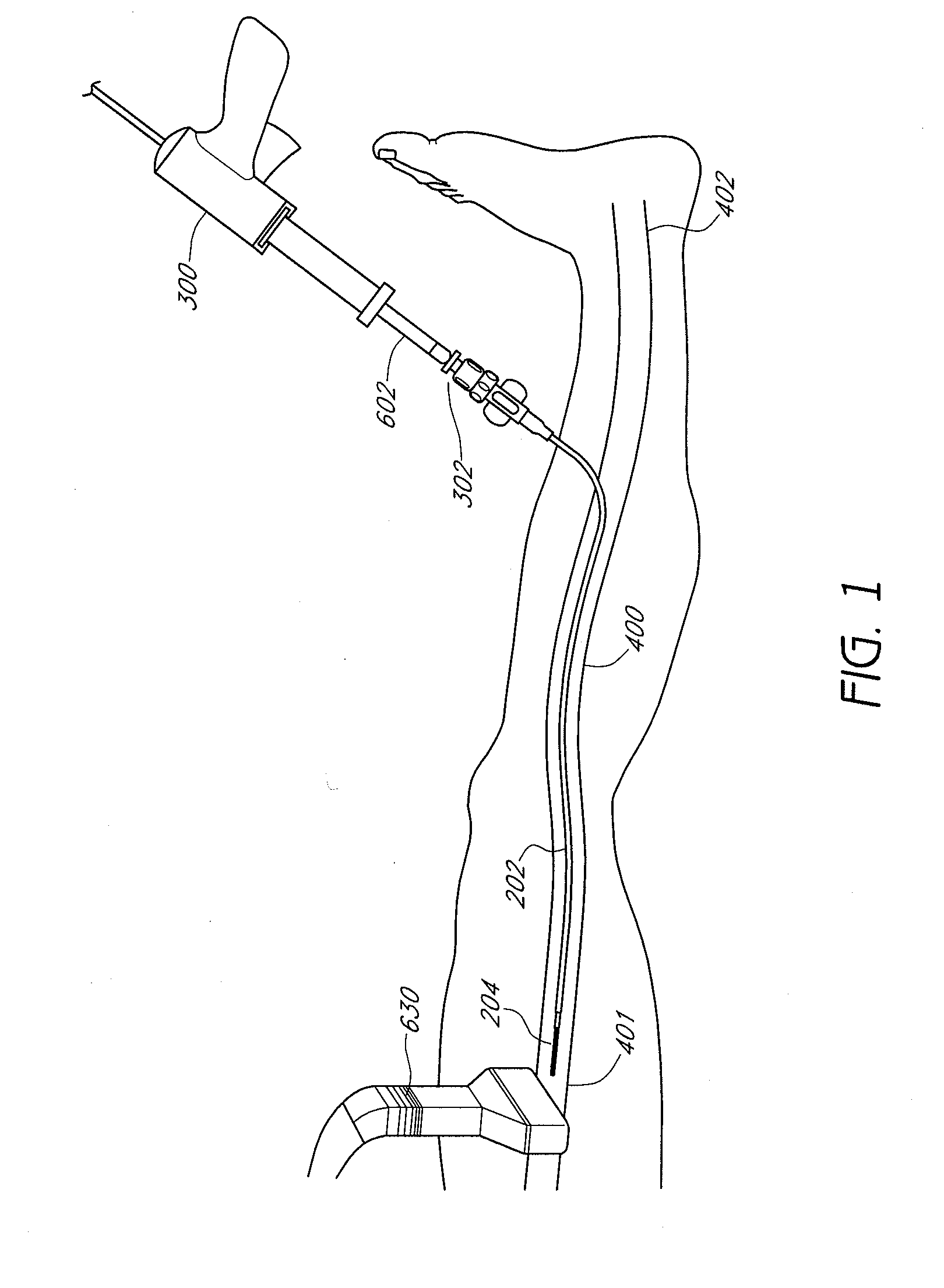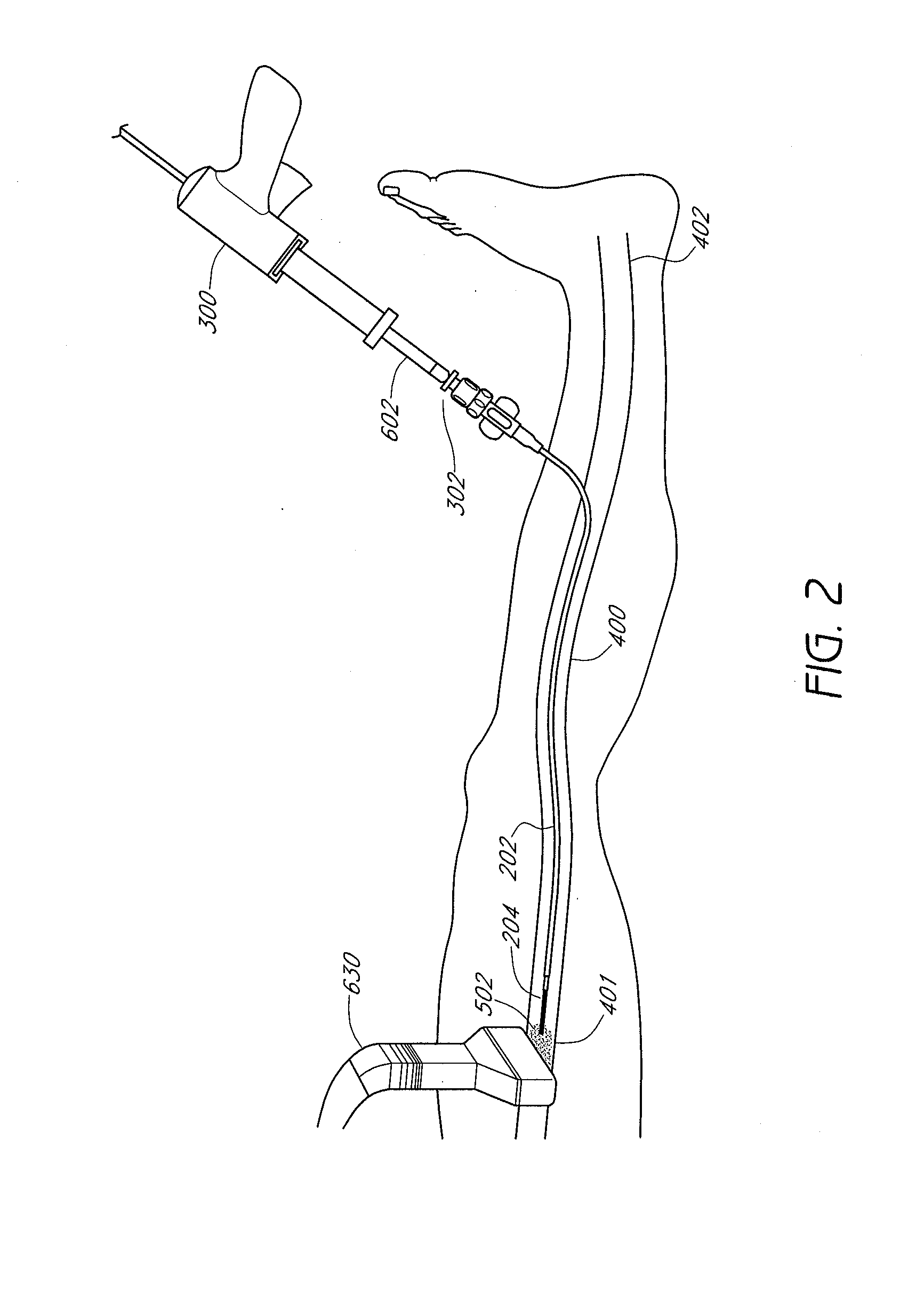Systems and methods for treatment of perforator veins for venous insufficiency
a technology of perforator veins and systems, applied in the field of systems and methods for treating perforator veins for venous insufficiency, can solve the problems of increased venous hypertension in the region, venous reflux, and impaired drainage of venous blood from the legs
- Summary
- Abstract
- Description
- Claims
- Application Information
AI Technical Summary
Benefits of technology
Problems solved by technology
Method used
Image
Examples
Embodiment Construction
[0024]Disclosed herein are systems, methods and devices for the minimally invasive treatment of varicose veins and other medical conditions. When used herein with respect to the device, proximal can refer to toward the access insertion site into a blood vessel, while distal refers to away from the access insertion site and in the direction of the patient. In the treatment as applied to the great saphenous vein, proximal may mean cephalad, or towards the head, while distal refers to the caudal direction. In some embodiments an occlusive device is deployed to block the saphenous vein just distal to the Superficial Femoral Vein Junction (SFJ) to coapt the vein walls together encouraging adherence of the walls. This technique may be used with a drug such as sclerosing solution or a device like medical adhesive. In some embodiments, complete vein closure is the desired clinical result of all treatments to mitigate the effects of venous hypertension caused by retrograde venous flow. The o...
PUM
 Login to View More
Login to View More Abstract
Description
Claims
Application Information
 Login to View More
Login to View More - R&D
- Intellectual Property
- Life Sciences
- Materials
- Tech Scout
- Unparalleled Data Quality
- Higher Quality Content
- 60% Fewer Hallucinations
Browse by: Latest US Patents, China's latest patents, Technical Efficacy Thesaurus, Application Domain, Technology Topic, Popular Technical Reports.
© 2025 PatSnap. All rights reserved.Legal|Privacy policy|Modern Slavery Act Transparency Statement|Sitemap|About US| Contact US: help@patsnap.com



